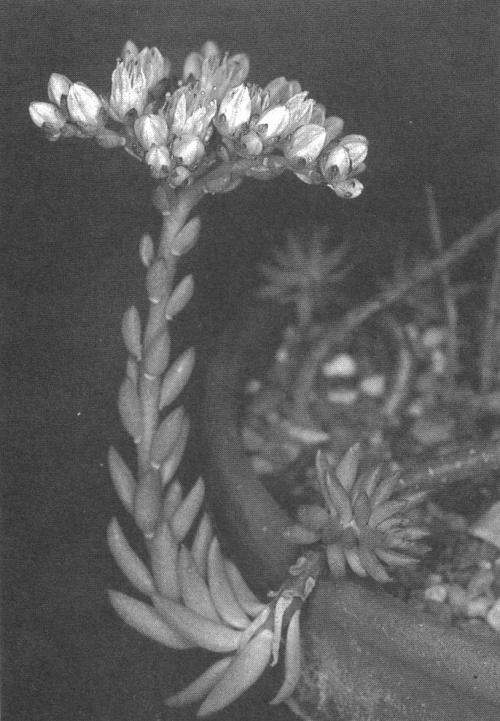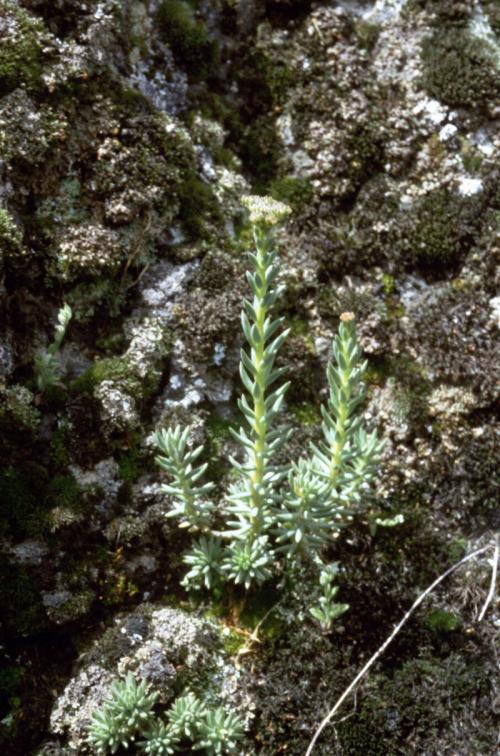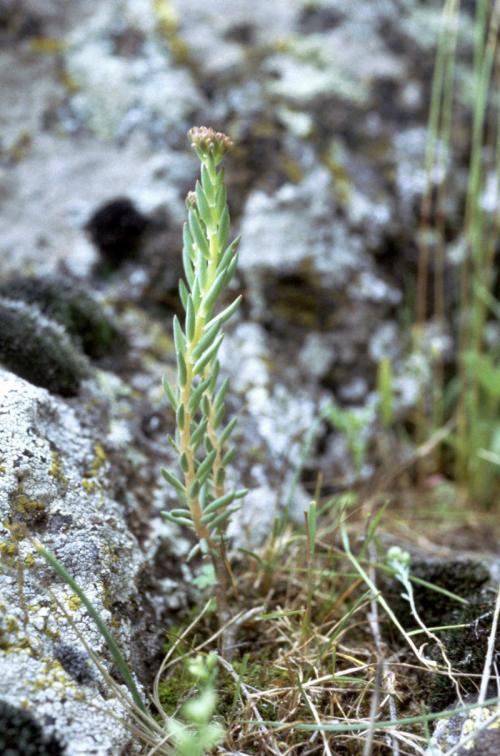SUBULATUM (C.A.Meyer) Boissier, 1872
Synonyms :
Cotyledon subulata C.A.Meyer (1831) / Umbilicus subulatus (C.A.Meyer) Ledebour (1843) / Oreosedum subulatum (C.A.Meyer) Grulich (1984)
Sedum acutifolium Ledebour (1843)
Umbilicus acutifolius Ledebour (1843)
Sedum calvertii Boissier (1856)
Distribution : Turkey (Anatolia), Caucasus (Georgia, Armenia, Azerbaidzhan), Iran, southern Russia (near Volgograd); stony open places, 1000 - 2500 m.
Description (according to 't Hart & Bleij in IHSP, 2003) :
Perennial herbs with thickened roots forming slender tubers and ascending or trailing and rooting, sometimes tufted, little-branched shoots.
Leaves alternate, imbricate, sessile, spurred, subulate-linear, 9 -20 mm, terete, acute or acuminate, dark green or glaucous-green.
Inflorescences : Flowering branches erect or ascending, simple, leafy, to 20 cm tall, inflorescences corymbose with 2 - 4 often forked monochasial branches, bracts small, leaf-like.
FIowers 5-merous, subsessile or shortly pedicellate, sepals broadly sessile, basally connate, ovate, ± 2 mm, acute-acuminate, petals basally connate, erect during anthesis, oblong-ovate, 5 - 6 mm, apiculate, white, filaments white, anthers dark red.
Cytology : 2n = 18
The closest relative is S. albertii (Byalt, pers. comm.). - [H. 't Hart]
Ray Stephenson (Sedum, Cultivated Stonecrops, 1994, pp 143 - 144)
Sedum subulatum is exceptionally rare in cultivation. Having been lost to cultivation several times, it has recently been reintroduced. The species is very new to me, but Ron Evans grew it for a few years and depicted it well. Roots are thickened, and stems are mainly simple to about 10 cm (4 in) high, carrying fleshy, gray linear leaves with a pronounced spur on the base and apiculate tips (Leaf shapes, fig. 3 hh). The dense inflorescences of scorpioid branches carry white flowers with erect petals, and carpels have a long subulate (wide-based but sharply pointed) beak.

Sedum subulatum petals are erect and united at the base.
Habitat : Found in calcareous stony soils in mountains to over 2000 m (7000 ft) in the Caucasus Range, this stonecrop is widespread from Armenia to Iran and Turkey, but apparently not in the Balkans as has been suggested.
Main points of distinction : Vegetatively, plants of this species resemble those of the common Petrosedum genus, which have yellow spreading petals. Because of their upright, white petals connate for 2 mm (0.08 in), flowers of Sedum subulatum are so unusual that the plant has been referred to the genera Umbilicus and Cotyledon. Stems have a very thick base, unlike those plants of the Petrosedum genus, except for P. [amplexicaule ssp.] tenuifolium. Recently in the United Kingdom, a small Turkish form of Petrosedum sediforme has been distributed as S. subulatum. P. sediforme does not have terete, apiculate leaves, and the flowers are most contrasting. 2n = 18.
Variation : Plants distributed as Sedum acutifolium [synonym of S. subulatum] by the International Succulent Institute are yellow-flowered S. sarmentosum.
Horticulture : This plant appears difficult to grow in temperate, maritime lowlands, pre-ferring to grow in winter when perhaps it needs some warmth and water.


Photographs taken at foot of Mt Ararat ca 3500 m, N facing.
Ray Stephenson